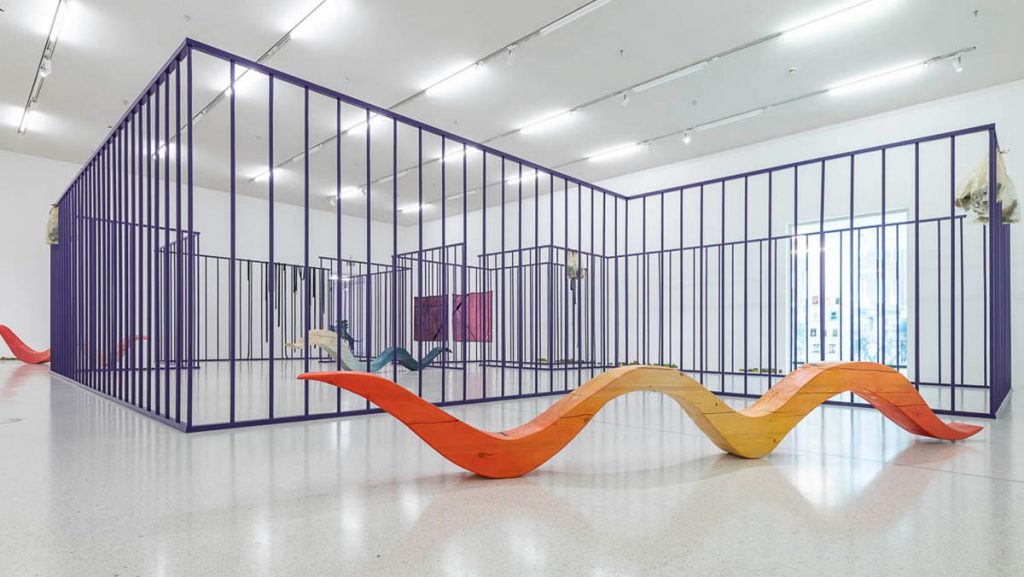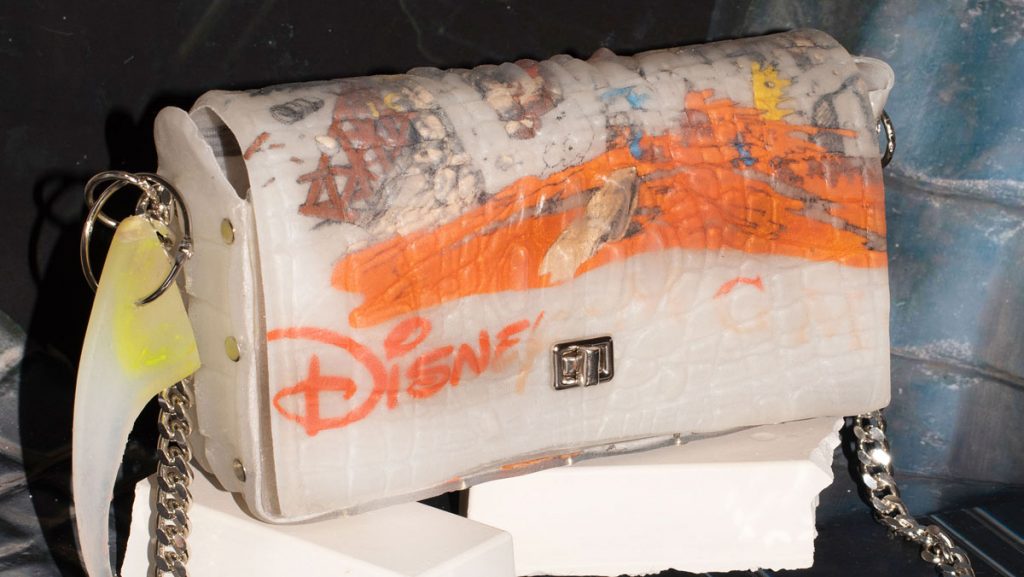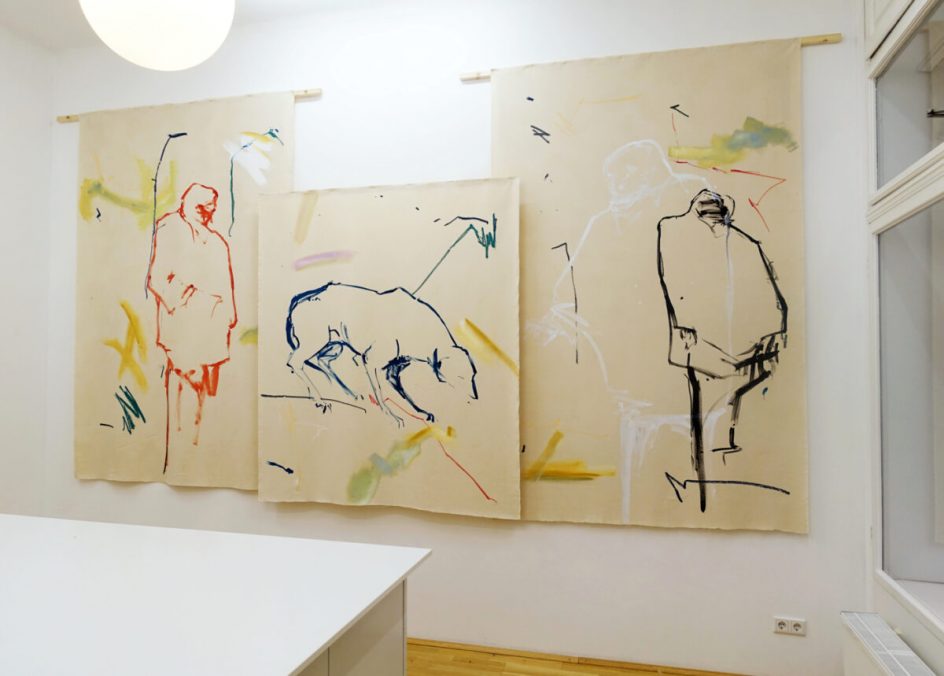
Dear Philipp, you are currently having a solo exhibition at Christine Ernst, in a Framing Store. Can you tell us something about this space, the works that you are showing there. How did it feel for you, the artist who rarely uses regular frames, to install in a place full of frames?
This Art Gallery and framing shop is a unique piece of Vienna’s art world. Christine Ernst is running it for many years and has shown a variety of artists throughout the decades. Some of them are or have become famous, like Martha Jungwirth, but she shows always also young and upcoming talents. The last show was a beautiful work by Linda Berger, for example.
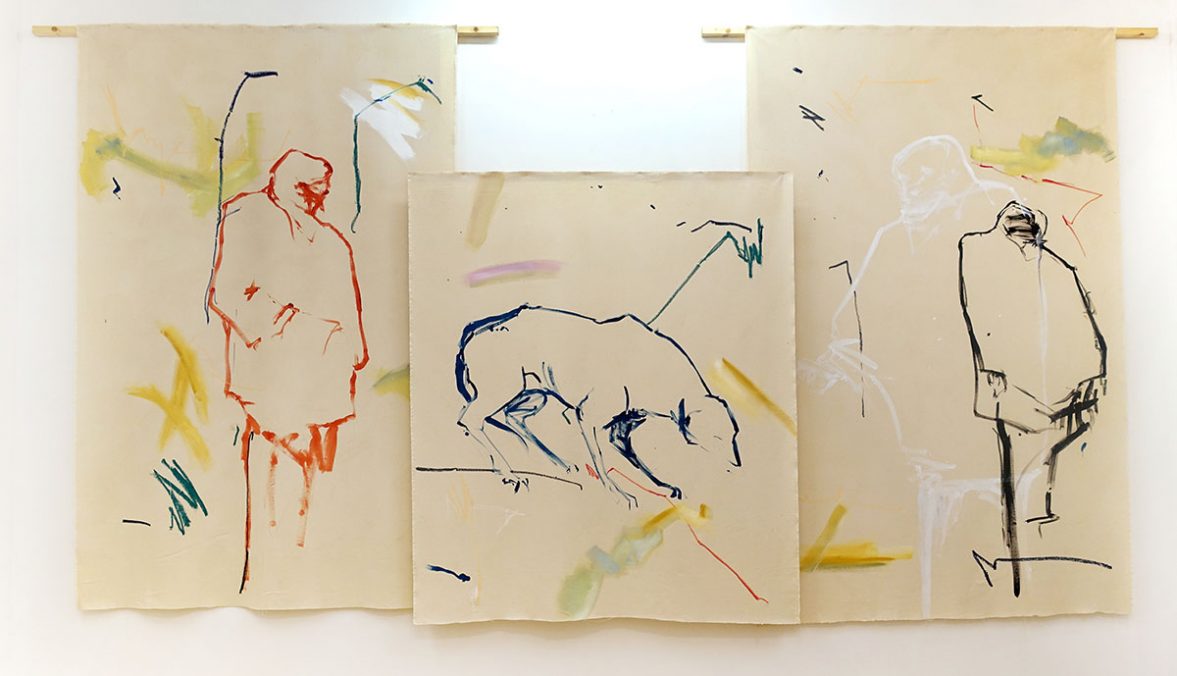
What makes the space so special is the diversity of visitors it gets due to it also being a framing store in the First District. There might be someone coming in with a Picasso or 15th-century print he just bought at the Dorotheum, and he’ll be confronted with young contemporary art. I love the conversation of the different aspects of the art-world this place inspires. It has this atmosphere of old Vienna, but at the same time, you never feel like time has stopped. It is so much more full of life than many of the white cube galleries you’d find in a city center. For the whole duration of 2020, Christine Ernst had a program of one-work shows.
Therefore the main part of my exhibition is a huge triptych called „wenn du nur könntest.
It’s a work about possibilities and restraint. Very bold and poetic at the same time. I like how it works in this small space, it kind of takes over the room but opens up different dimensions. And I really like frames, but I also love to deconstruct them and play with the idea of what a frame is. Is it part of the artwork? Is it something separate? How does it change the artwork and its perception?
What makes your canvas look like they do? It comes to my mind the works of you that I have seen at the exhibition Hope in AG18 Gallery. Which formats do the work have this time?
The canvas is hanging loosely from a wooden construction. In that regard, it is very much like the artworks from last year, where the canvases were flowing out of deconstructed frames. Only this time, the framework is hidden behind the canvas. That way, the 3-dimensional element is reversed, making the paintings appear a bit floaty. „ These are very big paintings, the biggest ones I ever did actually, in a very confined space. So I wanted to make them as light and airy as possible.
At first glance, one could think that these artworks have easy movements, that has been executed in a fast way. How long does it take for you to work on such a piece, and how you prepare yourself for such a work?
If you just look at the drawing, it is factual that it is a fast and quick gesture, but especially because of that, it takes a lot of preparation.
Once I put the brush down, there is no pausing or rethinking, or correcting. I have to get it right. Think of it like Olympic diving. Once you have jumped off the board, you cannot stop. You have to make all the twirls and flips correctly before you hit the water. It is over in a few seconds, but you have to train for years to make it work.
Also, I do not really work with sketches. I always loved the quick gesture, and I felt like I could never recreate the feeling of the sketch on a „real“ artwork. It just feels like a copy.
So my drawings and paintings are the sketches, they are the first and only version of the artwork.
That might seem a bit lazy to some, but it is fully correlating to my artistic approach. I am always trying to convey a story with as little information as possible. I am looking for that vague moment where you get the feeling of a story, but you cannot grasp it, and your mind starts coming up with interpretations and assumptions. For me, that is the most emotional part of storytelling. That means that I have to take a lot of time to prepare myself mentally to get into the right emotion, before I start.
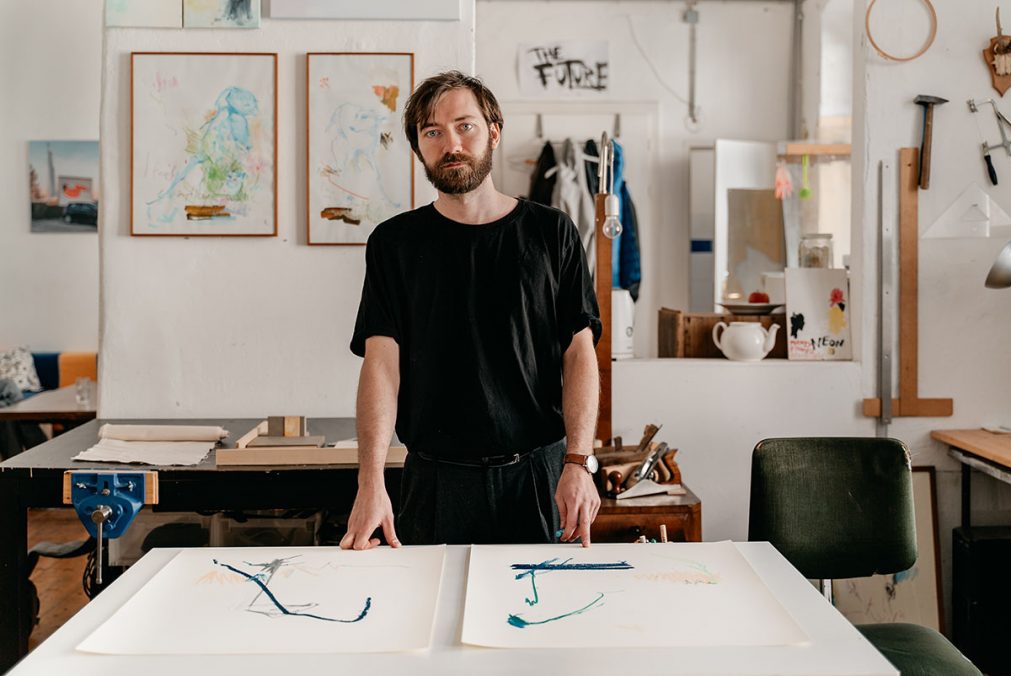
I find it notable the displays and stages that you build for your works and your exhibitions. How did this approach evolve?
Working in installations for me has a lot to do with the direction and movement of reading the artwork. When I was still in University, I was working a lot with books, and I loved the idea of moving through the book to read it. It really is a journey, you start at page one and move from page to page, and the story unravels for you. Forcing you to spend time and explore. Unlike, for example a painting, where you could be tempted just to take a quick glance and move on. But I found the linearity also very limiting. So I started taking the books apart and arranging them in a 3- dimensional space. This way, I could give the artwork a direction of movement while opening it up so everyone could find their way around the story. Then this evolved into something more abstract. The book pages disappeared, and I kept working with the framework of fabric, string and wood. Focusing on fewer painted elements. For „erst wenn alles fertig ist“ for example, I used fabric straps and wood to create web- or nest-like structures to encase and display single artworks. So from different viewpoints, the whole exhibition fused to a single form that then revealed its single elements once you walked through it. Like a single book is formed out of different chapters.
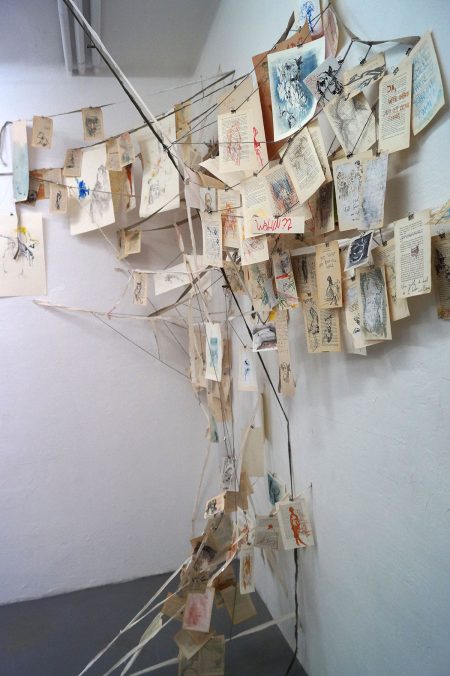
Philipp Renda, „I was taking pictures but then my camera died“, 2016, pericope , Salzburg, Exhibition view. 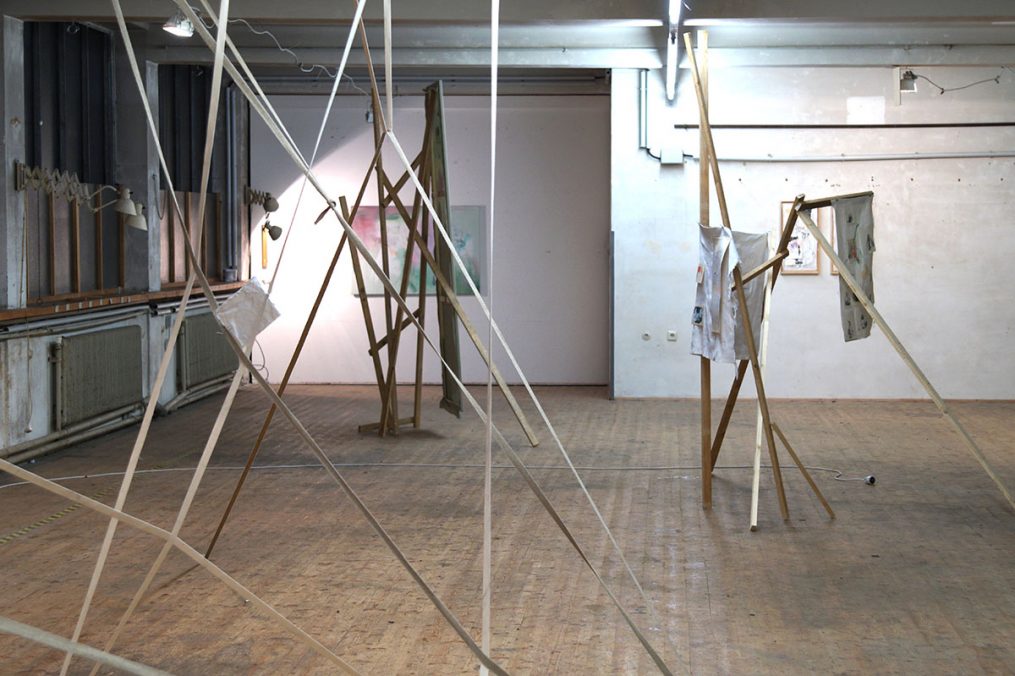
Philipp Renda. „erst wenn alles fertig ist“, 2017, Galerie die Schöne, Vienna Exhibition view.
Philipp Renda. „erst wenn alles fertig ist“, 2017, Galerie die Schöne, Vienna Exhibition view.
I would say that the installation around the artwork has utterly remained on you. The exhibition cozynest with the artist Iris Weigel also has special features. It has been worked a lot with installation, you two have create real stages.
Cozynest is part of a trilogy of Exhibitions that I am currently working on with the german artist Iris Weigel. The idea originated almost a year ago at the beginning of the Pandemic, when we were paired up for the project „question me & answer“.
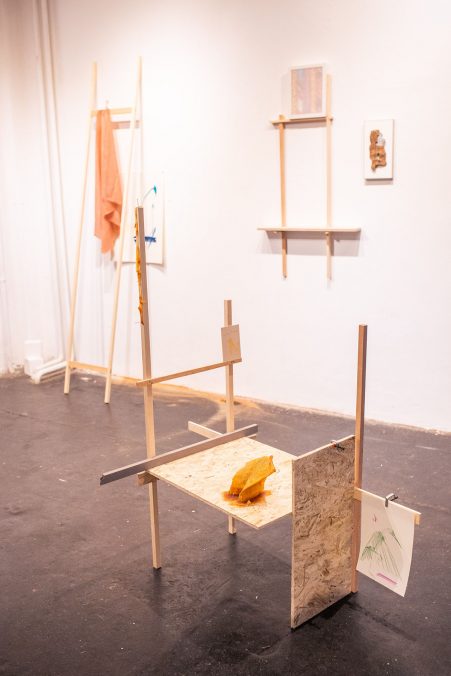
She describes her work as a search for traces of the obscure, the „abnormal“, unconventional, and peripheral phenomena. In her spatial installations, she creates fantasy spaces and surrealistic objects to explore the individual‘s relation with society. We quickly found a link in our art’s vague element, and we understood that we could really communicate in our artistic languages with one another. Sometimes very practically, where one would create a piece and the other would respond with an artwork as an answer. The installation is a representation of conversations in artworks, speech, and thoughts about the current situation; about how the concept of „home“ became deconstructed and rebuilt or refocused, how the idea of a living room changes when the center of vital interests changes due to a crisis. Exploring different aspects of housing, body, mind, emotion in that regard. This work was part of the exhibition „what does real life even mean“ in summer 2020. Now, at the red Carpet Showroom on Karlsplatz can be seen Cozynest part II, a progressed version of our part I.
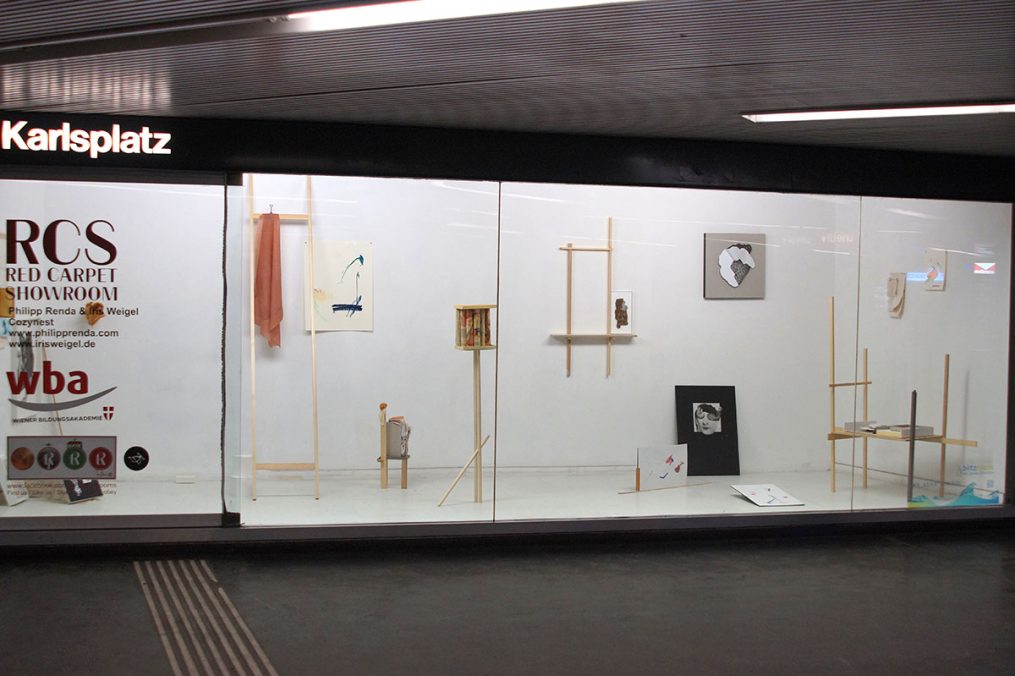
Philipp Renda & Iris Weigl. Cozynest part II @Red Carpet Showroom. Exhibition view 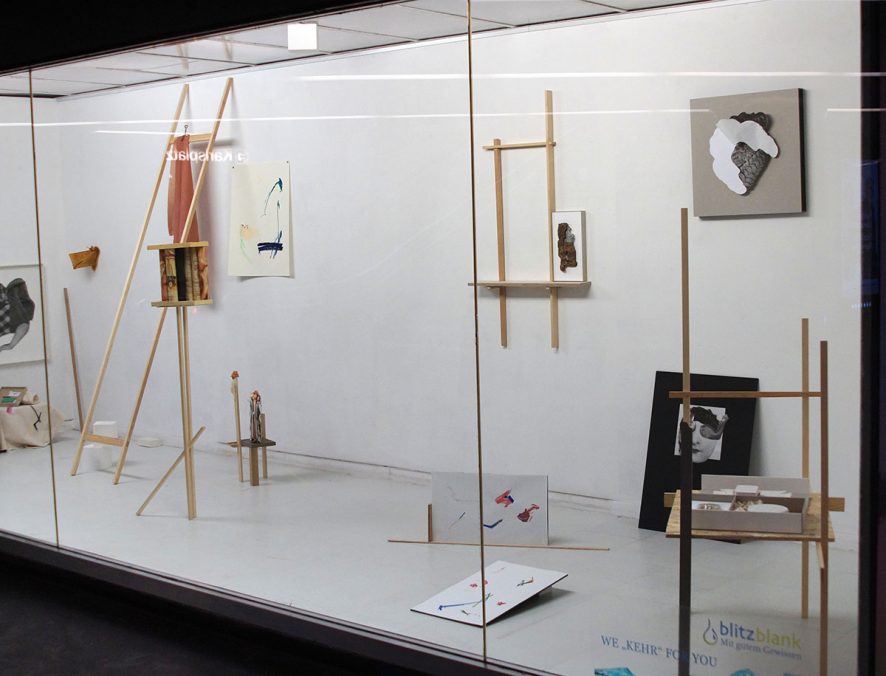
Philipp Renda & Iris Weigl. Cozynest part II @Red Carpet Showroom. Exhibition view
I was finding very captivating one of your publications, „Reiten wir nach Hause“. The sentences look like if they were coming from a dream fabrication; only a few sentences are highlighted, and there is lots of space for interpretation. Can you tell us something more about this work?
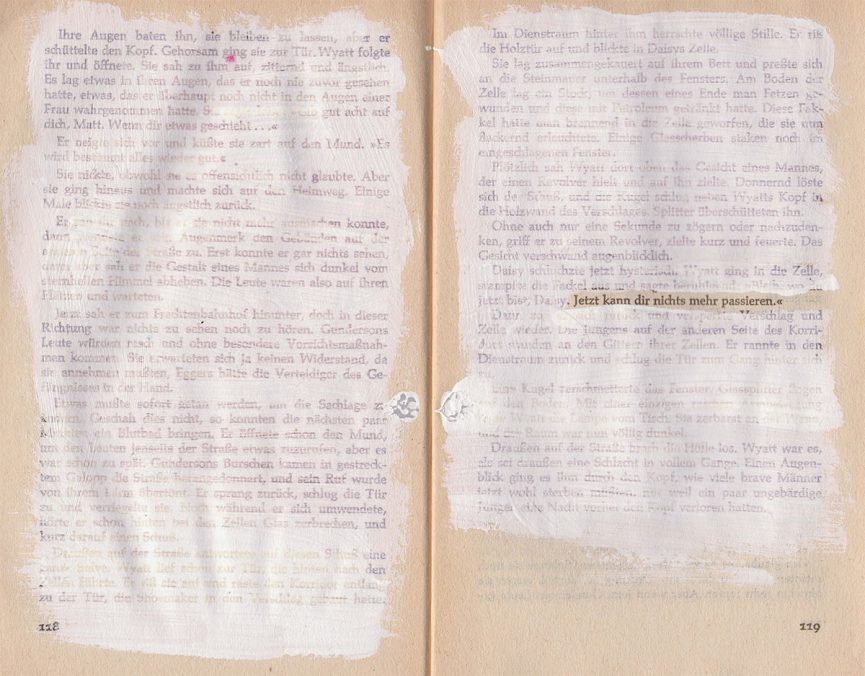
This book was part of my diploma.
At the time, I was working a lot with old pulp fiction and cowboy books that I found. You know, the really shitty ones with shirtless men and helpless women on the cover. I was searching these trivial stories for words and sentences that would evoke some deeper feelings and meanings if taken out of context.
In this process, I found how the mind tends to project itself on such sentences and that they triggered memories of people and stories from my past, some of which I had forgotten. So with this book, I went out on a fishing trip, using the sentences I found in these books as bait to fish for memories. I tried to write my memories down in such a way, that they could work the same way for the reader. Evoking interpretations and memories of their own.
How important are titles to works? What do they indicate?
The titles are at least 50% of my artworks. Text is really important to me, and if the text is not on the artwork itself it takes the form of the title, but it’s always part of the work. The sentences and words I use for the titles are partly citations of lyrics or literature that inspired the artwork, and partly the other way around – where I create the title to fit and enhance the emotion of the story that I want to tell. It is a kind of poetry for me.
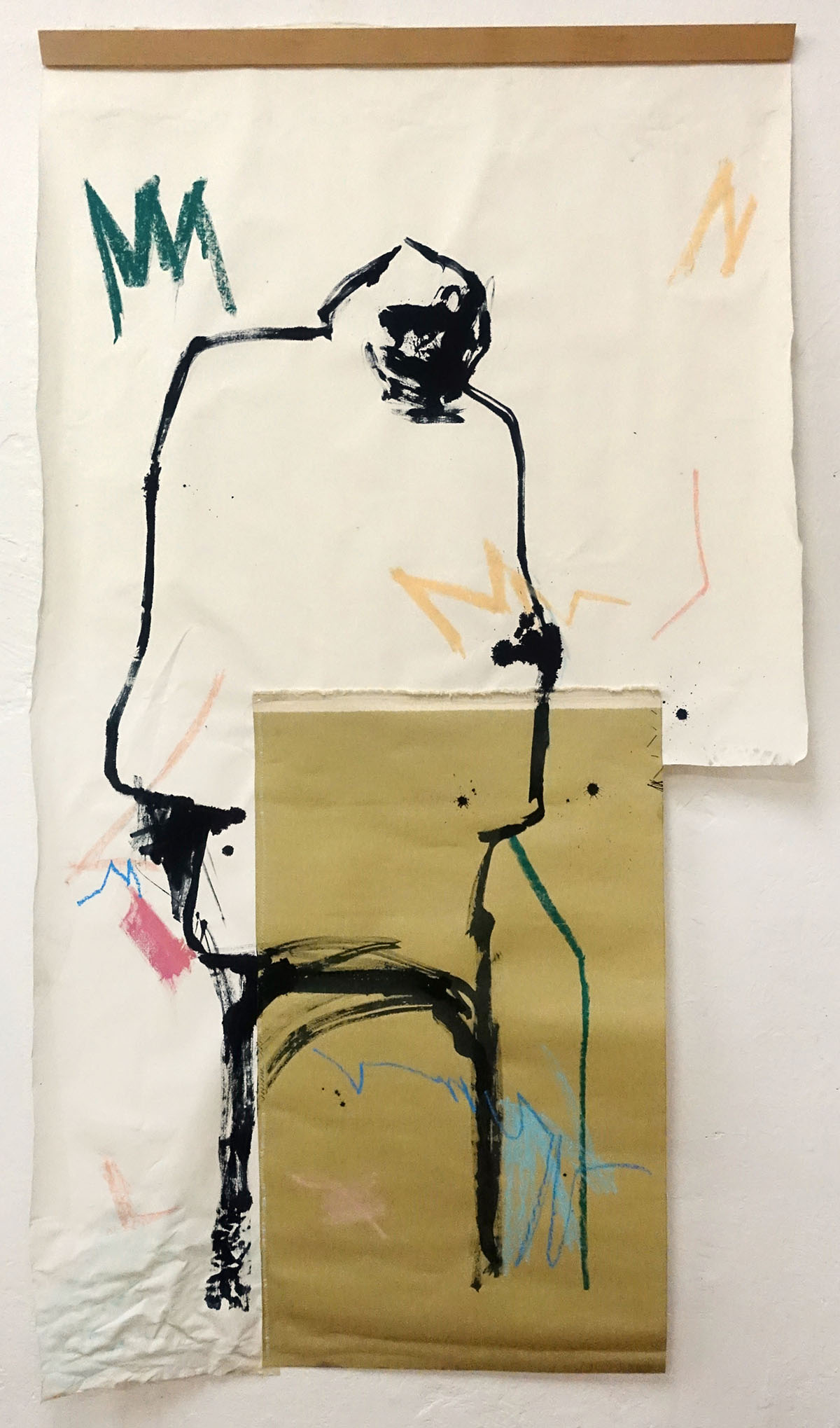
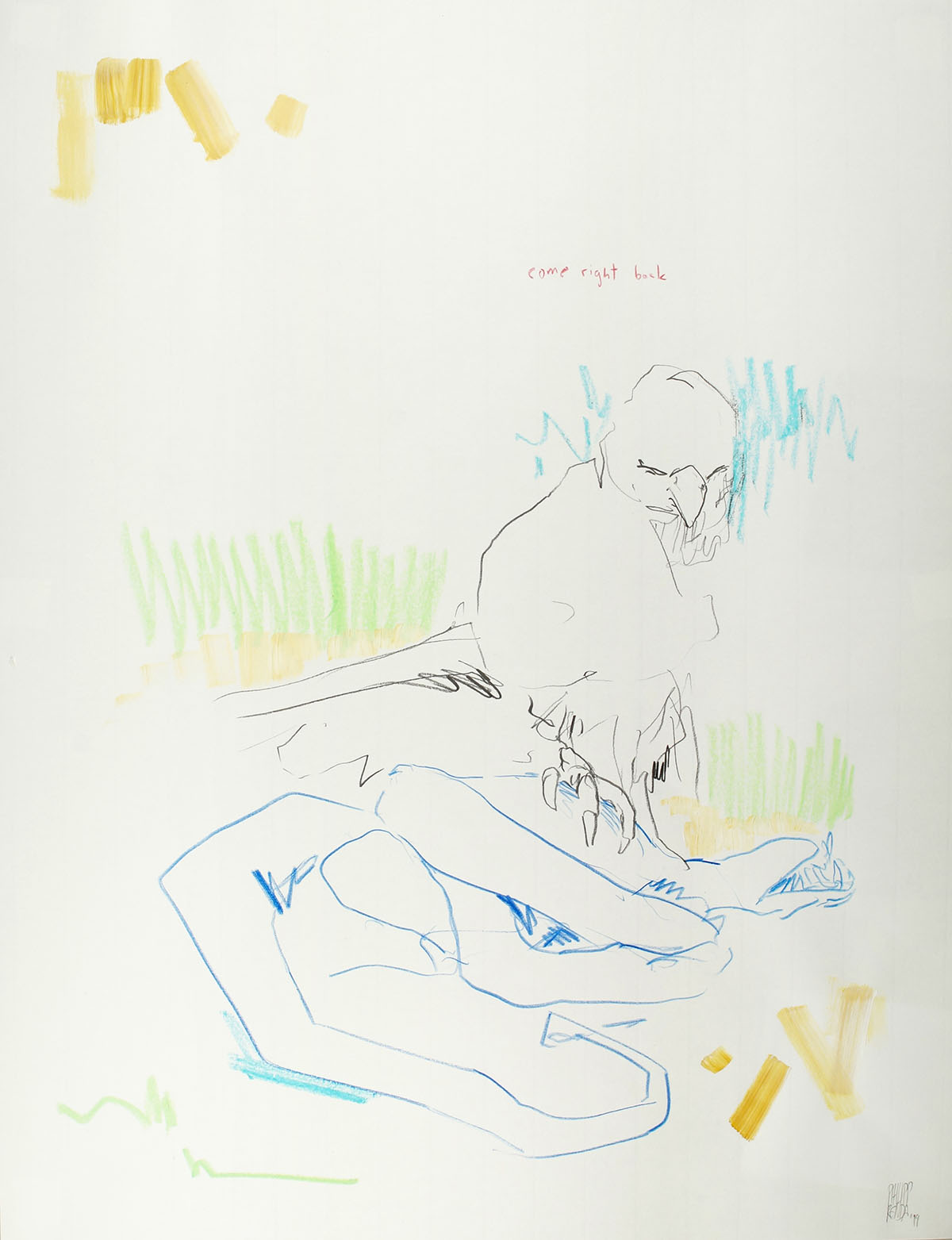
You have till now had a lot of group shows and a few solos. What each of these formats can bring to an artist?
Obviously, a solo show leaves you with more freedom of what you can show. You can work with the space, form everything into a cohesive composition. With a solo show, you can make a bunch of paintings work like an installation. Making the viewer move through your art, initiate connections and perspectives. But I also love the connection to other artists. In a good group show, the different artworks mutually enrich each other. There is always a conversation going on, always a certain kind of tension between the works.
I think a group show has just a different energy level; artworks might connect or repulse each other.
Also, usually, group shows tend to be curated under a certain motto, which can force you to think outside of your usual ways and start new directions in your thought process. Maybe you look at your work from an entirely different perspective. Seeing how other artists approach a theme, having discussions, all of that can be truly inspiring.
Philipp Renda – www.philipprenda.com
Exhibition Wenn du nur könntest @Christine Ernst (till end of Feb.)
Cozynest part II @Red Carpet Showroom till 27.02.2021



